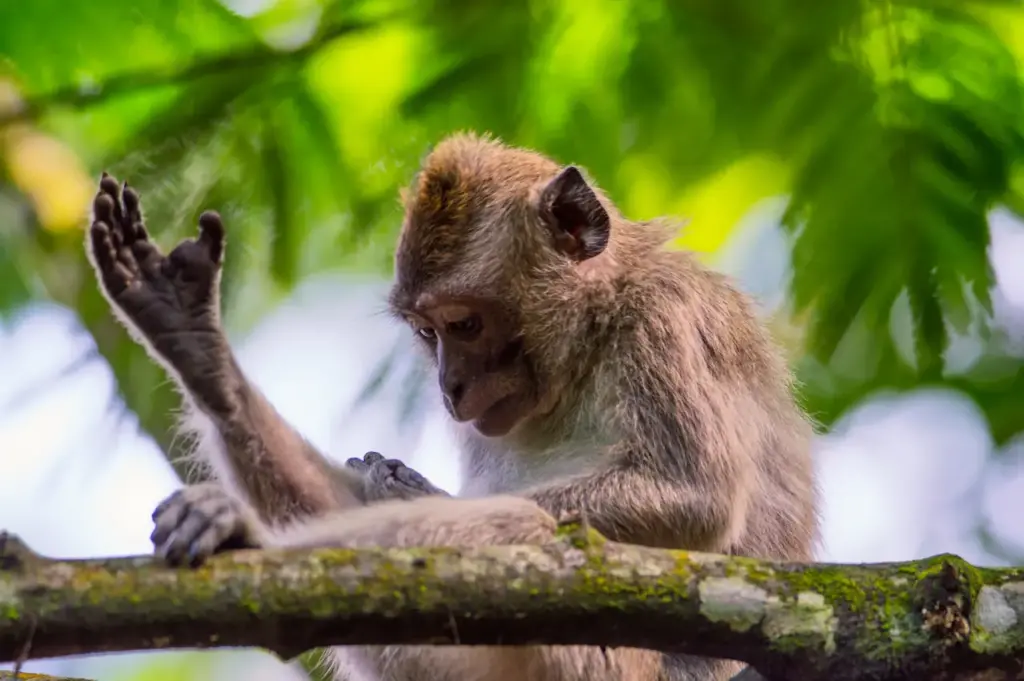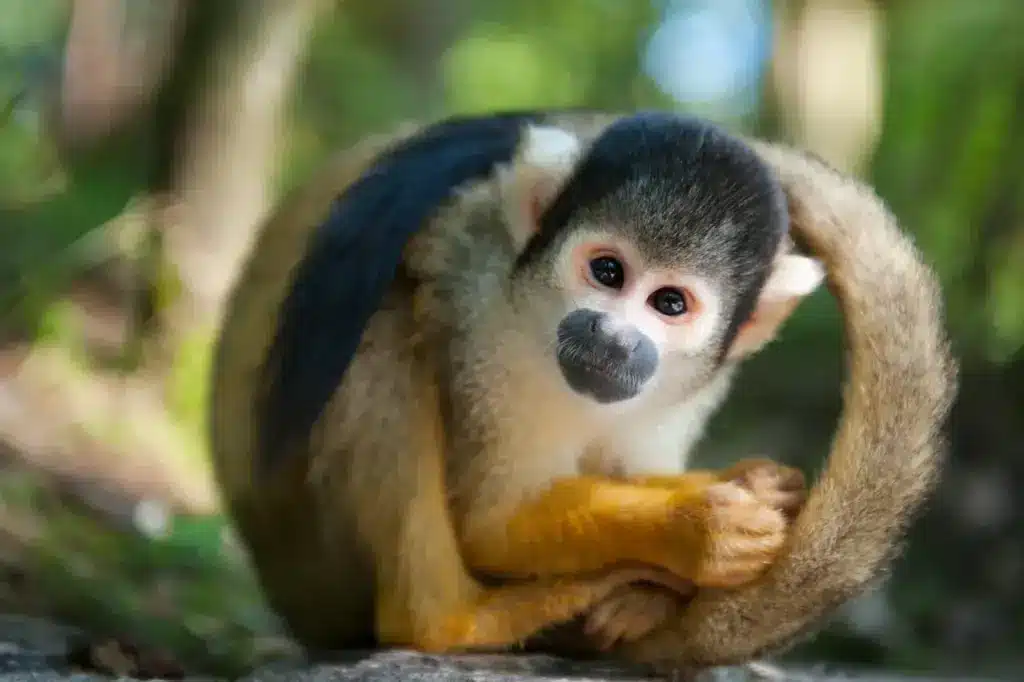Moonlight Monkeys
The ‘night monkeys’ of Central and South America are unique among anthropoids, which are the most highly evolved groups of primates, and include monkeys, apes and humans. As their name implies, night monkeys are active under the cover of darkness.
Azara’s Owl Monkeys Move By Moonlight

Anthropids—humans, monkeys and apes—are active during the day and rest at night. The only breakers of this rule are about a dozen species of “night monkeys” that live in Central and South America. These small, furry, big-eyed primates move about at night and hide from predators during the day.
However, scientists recently discovered a new wrinkle to night-monkey behavior while studying a species called Azara’s owl monkey, which lives in subtropical Argentina, Peru, Bolivia and Paraguay. Azara’s owl monkey moves around only when the moon is shining. When moonlight is unavailable, the tiny primates freeze in the trees.
Researchers from the University of Pennsylvania studied the monkeys by fitting a number of them with special “actimeter” collars that recorded their activity level. At times when the moon could not be seen, such as during a lunar eclipse, the owl monkeys stayed in one spot. When the moon once again put in an appearance, the the collars recorded an increase in movement and feeding activity.

Unlike other night monkeys, Azara’s “moon activated” owl monkey moves about at dawn and dusk rather than waiting for full darkness before beginning to travel and feed. Could it be that the species’ ability to see in the dark is not quite as acute as that of the other night monkeys? Further research would seem to be called for.
Although night activity among anthropoids is a rarity, it is quite common among non-anthropoid primates such as lemurs, galagos and tarsiers. These more primitive primitive primates are also called prosimians.
Read the full scientific report at PlosOne.org.



